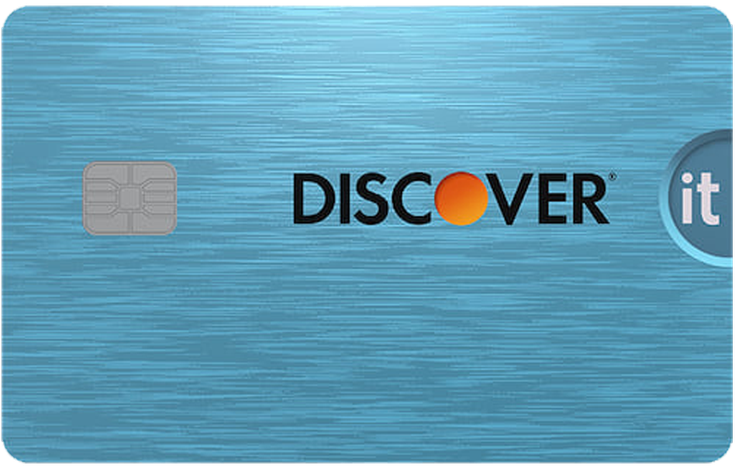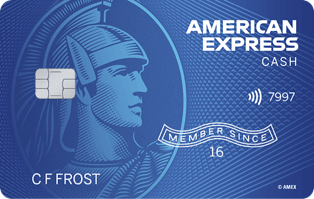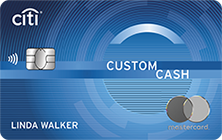- myFICO® Forums
- Bouncing Back from Credit Problems
- Rebuilding Your Credit
- ABCD2199's Eleven Rules to Credit Rebuilding
- Subscribe to RSS Feed
- Mark Topic as New
- Mark Topic as Read
- Float this Topic for Current User
- Bookmark
- Subscribe
- Mute
- Printer Friendly Page
ABCD2199's Eleven Rules to Credit Rebuilding
Is your credit card giving you the perks you want?
Browse credit cards from a variety of issuers to see if there's a better card for you.
- Mark as New
- Bookmark
- Subscribe
- Mute
- Subscribe to RSS Feed
- Permalink
- Report Inappropriate Content
ABCD2199's Eleven Rules to Credit Rebuilding
I hope it's OK that I post this so I have something to link to instead of rewriting everything again and again in comments.
These are my personal rules to credit rebuilding. What works for you may differ, but these have worked excellently for me.
Rule #1: Credit rebuilding is not debt building.
If you have low FICO scores and want them higher, part of raising them means rebuilding credit. This does not mean rebuilding debt. If you have low FICO scores and want them higher, you should have no excuse for piling on new debt with the new credit you are building. I've seen it too often that someone gets a store card from an online predatory merchant and in a year they owe $5000 at 33% interest. Don't do that.
Rule #2: Three open credit cards to start.
FICO8 scores gives you "free" points as you go from zero open credit cards to 3. The new age penalty for new accounts is lower than the boost you get from going from 0->1->2->3 credit cards that are open. Good starter cards for rebuilding are Capital One (Platinum or Secured) and Discover (Chrome or Secured). One thing I like to see people do is get the Capital One and Discover secured cards right off the bat, and then in 6 months you should qualify for an unsecured Capital One card (QS1 typically). I prefer seeing people avoid getting predatory cards like Credit One, Milestone, Total, Indigo, etc. I also prefer to see people avoid getting store cards because they can hamper your rebuild years later.
Rule #3: The AZEO Method.
This one is a heroic find by whoever discovered it. AZEO means All Zero, Except One. This means you first go and find out when your credit card reports a balance to the credit bureaus. Most cards report on statement cut date. Some report on the first of the month. You can find when your credit card updates by using Credit Karma and look when it last reported. Then, in the future, you can use your cards however much you want, but when they actually report the balances used, all cards should report $0 balance except for one card. The one card that reports a balance should report less than 8.9% but more than $2. So if you have a $300 limit card you will use as your AZEO "one" card, that $300 limit card should report somewhere between $2 and $25. The other cards must report $0 usage, so if you used them in that month, paid them to zero.
There is absolutely no excuse for not doing this during rebuilding. If emergencies come up during rebuilding, see rule 4.
Rule #4: Savings is more important than anything for rebuilding.
You and I both got into FICO hell because we did not plan well in the past. It doesn't matter if you lost your job, had a medical emergency, or were just irresponsible: we didn't plan for those events with savings to cover us. Many people who go through a bad life event are able to recover from it in just 6 months, but during those 6 months they stop paying creditors, and that hurts for 7-10 years. So my rule #4 (which is actually my first rule!) is start building an emergency savings account. If you're rebuilding your financial life, stop buying useless things. Think about turning off cable TV or Netflix or downgrading your phone service. Cut out dinners and bar nights and video games and movies. Just do it for a year, so you can save money towards the next life event -- it'll happen to all of us, this time you can be prepared.
Rule #5: Attack your derogatories, patiently, and expect it to take a lot of time and energy.
Negative tradelines reporting on your credit reports last 7-10 years typically. Attack the lowest hanging fruit first (such as chargeoffs showing balances, or collections outside of your jurisidction's SOL date). This can take time, it took me 7 months, it might take you a year. I do all of my work in writing, via postal mail, using CMRRR (Certified Mail, Return Receipt Requested). This shows the other party that I am very very serious about both of us following the law, and it increases the chance that someone reads it.
I do not do disputes via the phone or online. This is lazy and you may suffer from it even if it works for others. Once you've attacked the low hanging fruit, you can start working out deals with collection agencies to PFD because you'll have saved money up to pay if they negotiate it. Get it all in writing. Don't deal with the phone or email, USPS only, CMRRR, and force them to reply in writing. If they want to commit mail fraud, let them.
Also start considering goodwill letters to any chargeoffs or lates you've paid for -- I say wait 6-12 months of showing great credit usage because the original creditor MIGHT do a soft inquiry to review things, and if they see you're truly responsible, you may get help. I got goodwill corrections on ALL my lates, but it took almost 6 months of writing 100s of goodwill requests to dozens of people every month.
Rule #6: The Alliant SSL Technique.
FICO8 scores give you a bump if the following are true:
- You have an open and active installment loan reporting (student, auto, personal)
- That installment loan has less than 8.9% of the original balance left to pay
It's hard to do this with student loans or car loans. The SSL Technique only works if you don't have any student or auto or mortgage loans open and reporting. If that's the case, go to this link and read the first 2 pages over and over until you get it. Then do it. If you ask me a question that is answered in the first two pages there, I will push the edge of the rules here and be extremely sarcastic. http://ficoforums.myfico.com/t5/Understanding-FICO-Scoring/Adding-an-installment-loan-the-Share-Secu...
Rule #7: The SCT (Shopping Cart Trick)
Please don't do this right away. On one hand, getting ONE store card using the SCT Method is probably fine -- I did it myself with a store I shop at and have for 16 years. I regret it. The worst thing people do is use the SCT to get 10 store cards and then charge them all up with items they can buy cheaper elsewhere, and then they're paying 30% interest on stuff they overpaid for by 30% already. FingerHut and Overstock are two common websites that on very very rare occasions have good prices, but are usually priced with predatory pricing because they give out credit lines like Halloween candy corn. You don't need the SCT to rebuild. Lots of us made the mistake of using the SCT and I swear it holds my credit limits down with other lenders when I apply. So avoid it like the plague, none of the SCT cards are useful for emergencies or most common lifestyle needs. Also remember that buying a TV on an SCT card doesn't get you Visa/MC extended warranty coverage.
Rule #8: Make a real budget.
If you don't have a budget, you need one. If you aren't abiding by your budget, you need to remake it and abide by it. The average rebuilder that I have helped in the past 2 years or so still spends over $4300 a year on useless items. It amazes me that people will swear they can't afford $200 for a secured card but in the last 3 months they spent $300 on Panera Bread runs at lunchtime for $16 each. Everyone can make a budget, and everyone should live by it until their scores are in the 700s -- and once they reach 700s, they should still live by their budgets!
Rule #9: Befriend a local mechanic.
Every town has at least 2. My town has 7 within a 2 mile walk. Go meet them all. Meet the owners. Talk to them and ask them if they ever sell driveable cars at a good price. Three of my local mechanics ALWAYS have cars for $1500 that will get another 50,000 miles out of them. One of these mechanics speaks broken English but he's got magic hands when it comes to fixing up beaters that will drive another year or two without issue.
Now that you've befriended them, consider them when it's time to get a car. Buying a car for an interest rate over 6% or with less than 20% down is going to get a lot of folks back in credit hell. You can probably buy a nice beater for $2000 or less, for cash, and drive it for years while saving up 20% down payment and fixing your FICO scores to qualify for less than 6% interest.
Rule #10: Never max out any card.
FICO looks at any card as "maxed out" if you let it report more than 88.9% utilization one month. This can absolutely CRUSH your scores during rebuilding. Do not do this. If you have no choice and must carry a balance, try to carry it on 2 cards or 3 cards. You want any one credit card to report less than 38.9% otherwise FICO will ding you for that cycle til it's paid down. If for some reason you have to let a balance revolve, see rule #4 again and go back to your recent spending and highlight every single luxury item you bought that you should have avoided so you would have more savings. There are reasons to carry a balance at 0% interest for a year (new air conditioner, or whatever), but when you're rebuilding, you're focusing on better credit, not more debt.
Rule #11: Autopay, autopay, autopay. Also, autopay.
The last thing I believe are people who say "I forgot to make a payment and found out 3 months later than I am reported as 60 days late". No, you forgot to set up autopay. In fact, stop right here and log in to ALL your credit cards (store cards too) and set up autopay. Just go do it. Now. Set it up for the minimum payment due and tie it to a checking account where you know you will always keep a few hundred dollars available. I personally have a separate checking account JUST to make payments from. This protects me from accidental overdrafts. There is no excuse for not making the minimum payment when you have the money and "just forgot". Seriously, go do it now, across the board.
- Mark as New
- Bookmark
- Subscribe
- Mute
- Subscribe to RSS Feed
- Permalink
- Report Inappropriate Content
Re: ABCD2199's Eleven Rules to Credit Rebuilding
@Anonymous wrote:
Rule #2: Three open credit cards to start.
FICO8 scores gives you "free" points as you go from zero open credit cards to 3. The new age penalty for new accounts is lower than the boost you get from going from 0->1->2->3 credit cards that are open. Good starter cards for rebuilding are Capital One (Platinum or Secured) and Discover (Chrome or Secured). One thing I like to see people do is get the Capital One and Discover secured cards right off the bat, and then in 6 months you should qualify for an unsecured Capital One card (QS1 typically). I prefer seeing people avoid getting predatory cards like Credit One, Milestone, Total, Indigo, etc. I also prefer to see people avoid getting store cards because they can hamper your rebuild years later.
Great advice! ![]()
I think the section I quoted can change up depending on circumstances and goals.
We occasionally see people who are fortunate enough to start out with a "good" card, e.g. an unsecured Capital One Platinum, an unsecured card from a Credit Union, or sometimes something even better. I hate to see them take a step backward. I'd certainly avoid a secured card at that point (except possibly Discover's). Still, the reality is that they won't immediately qualify for a lot of cards with history that new and thin. But letting that one card grow and age for a few months should do the trick for being able to get another decent product or two.
Also, there are those who'd like Chase cards as early as possible. The trick there is to build some history while staying under 5/24. Two cards and a year (or a little more) of history — with a period of gardening before applying — seems to be a decent point to acquire one of the Freedom cards. I'd try to work my plan so a Chase card would be card #3 and possibly card #4.
So yes, I agree with the concept of getting three cards. But the timetable for getting them can vary.
- Mark as New
- Bookmark
- Subscribe
- Mute
- Subscribe to RSS Feed
- Permalink
- Report Inappropriate Content
Re: ABCD2199's Eleven Rules to Credit Rebuilding
I agree with what you're saying above HO. Throughout all of my 20's and half way into my 30's I had only 1 credit card the entire time and for the majority of those years my credit scores were in the 790-800 range. I never felt the need to have a second card at any point during those years, nor did my score ever need another 2 cards. I know this can vary from person to person and profile to profile, so I completely get the recommendation to grab 3 cards relatively early on.
- Mark as New
- Bookmark
- Subscribe
- Mute
- Subscribe to RSS Feed
- Permalink
- Report Inappropriate Content
Re: ABCD2199's Eleven Rules to Credit Rebuilding
@Anonymous wrote:I agree with what you're saying above HO. Throughout all of my 20's and half way into my 30's I had only 1 credit card the entire time and for the majority of those years my credit scores were in the 790-800 range. I never felt the need to have a second card at any point during those years, nor did my score ever need another 2 cards. I know this can vary from person to person and profile to profile, so I completely get the recommendation to grab 3 cards relatively early on.
I think the biggest reason, for me, to have multiple CCs early on, is that it really helps keep your AAoA high if you do need to apply for more credit later on. Just like a emergency fund, having a bolstered credit file, helps prepare for the unseen future.
- Mark as New
- Bookmark
- Subscribe
- Mute
- Subscribe to RSS Feed
- Permalink
- Report Inappropriate Content
Re: ABCD2199's Eleven Rules to Credit Rebuilding
Would this also be true after coming out of chapter 7 or would the bk7 to 700 plan work best?
- Mark as New
- Bookmark
- Subscribe
- Mute
- Subscribe to RSS Feed
- Permalink
- Report Inappropriate Content
Re: ABCD2199's Eleven Rules to Credit Rebuilding
I can't speak for ABCD2199.
The only really contradictory point (to my mind) is "3 open cards to start," whereas 7-to-700 calls for you to open your first card, wait 6 months, open another &c.
IMO it depends on your situation. The ideal is to open all of your initial accounts together so you get the scoring boost right away and they can all age togther. However, some folks have scores low enough, or enough derogs still appearing, or have burned enough lenders, that they don't prequal for much (or anything) and are going to have to take something closer to the 7-to-700 approach.
The rest of the points here are absolutely compatible with the 7-to-700 and make a great companion.
- Mark as New
- Bookmark
- Subscribe
- Mute
- Subscribe to RSS Feed
- Permalink
- Report Inappropriate Content
Re: ABCD2199's Eleven Rules to Credit Rebuilding
All excellent advice. Especially the all zero but one. And autopay. I (mistakenly) thought that showing a card was being used every now and then was a good thing, until it became a nightmare to manage them all and their cut off dates. It does help when asking for a CLI though.
I have to disagree with the everything in writing bit though. With just a small caveat. Sometimes when I'm just sitting at my computer doing work, I'll dial into one of the credit bureau dispute lines and just sit on hold. It's a much different experience when you are actively doing something else and just happen to get through to that one CSR at Experian who is more than happy to give you that early exclusion you have been denied ninety times in writing for. I am always super polite, use their first name as much as possible and if I am feeling courageous throw in a southern accent. It has wokred like a charm more times than I will admit to in writing.
- Mark as New
- Bookmark
- Subscribe
- Mute
- Subscribe to RSS Feed
- Permalink
- Report Inappropriate Content
Re: ABCD2199's Eleven Rules to Credit Rebuilding
Going to put in my .02cents...
There are surprisingly many folks who are building moreso vs rebuilding who only pick up .. ONE card... (V/MC usually but sometimes even an AX charge).... Think the biggest mistake I made is waiting so long to app for the second card.. even after a rejection.. That said.. even with folks going the slow road.. it really benefits you to pick up a second card a bit earlier on.. I know I regretted it.. ... Fortunately the regulars pushed me to app for a third card after the second approval... Saw the score nosedive but it came right back up and higher after 3 or so months.... And it seems some card companies "get" this audience when going for a second card.... always thought it was interesting having a family member with amazing scores and offers but the best choice they made was taking my advice and getting two other cards =)










- Mark as New
- Bookmark
- Subscribe
- Mute
- Subscribe to RSS Feed
- Permalink
- Report Inappropriate Content
Re: ABCD2199's Eleven Rules to Credit Rebuilding
- Mark as New
- Bookmark
- Subscribe
- Mute
- Subscribe to RSS Feed
- Permalink
- Report Inappropriate Content
Re: ABCD2199's Eleven Rules to Credit Rebuilding
AWESOME, AWESOME, AWESOME @ABCD2199!
Thank you for taking the time to put this together and sharing it with all of us.
I started my rebuild 1 year ago in just a few weeks (not that I really knew it at the time). It really was the first week in June, just before I was leaving on vacation when I experienced the SCT for the first time in an actual effort to purchase something that I needed prior to leaving on vacation. The first card was a Cap 1 QS1 which will be 1 year old the first week in December. And then all of a sudden I realized that my scores were getting better and that I was actually rebuilding. I still have a ton of work to do, but I have made this a very big priority in my life. I even took your direct advise using the CMRRR to have my fed tax lien removed off of EQ which was the last CRA reporting it and it worked like a gem!
Just Friday I was approved for my first credit card over $2,100 and it was an instant approval for $15K!
I am just about to head off to the garden and start working on the rest of the deragatories etc.
Thank you again for sharing your knowledge!